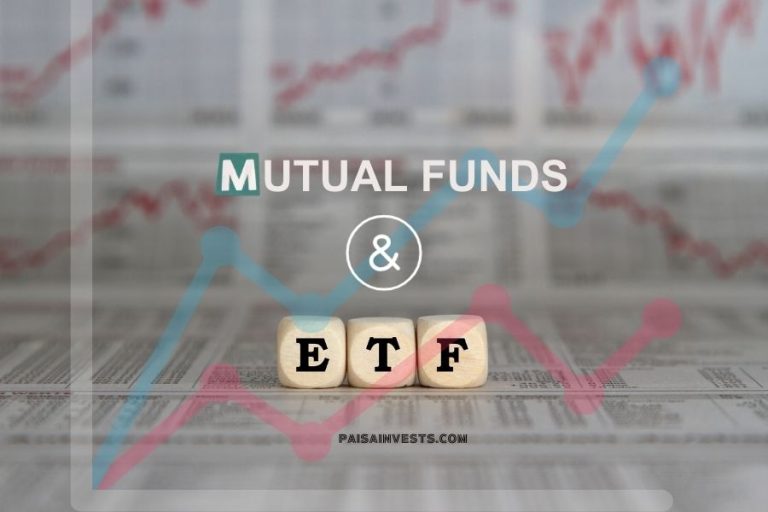In the realm of investment, navigating through various financial instruments can be daunting. Two popular choices among investors are Exchange Traded Funds (ETFs) and Mutual Funds. Both offer opportunities for diversification and investment growth, but they differ in their structures, trading mechanisms, expenses, and tax implications. In this article, we will delve into the intricacies of ETFs and Mutual Funds, highlighting their similarities and disparities to help investors make informed decisions.
Understanding Exchange Traded Funds (ETFs)
Exchange Traded Funds, or ETFs, are investment funds that trade on stock exchanges, similar to individual stocks. They are designed to track the performance of a specific index, commodity, bond, or a combination of assets. ETFs offer investors exposure to a diversified portfolio of securities, allowing them to gain access to various markets with a single investment.
One of the key features of ETFs is their intraday trading capability. Unlike mutual funds, which are priced and traded at the end of the trading day, ETFs can be bought and sold throughout the trading day at market prices. This provides investors with flexibility and liquidity, as they can react to market movements in real-time.
ETFs also tend to have lower expense ratios compared to mutual funds. Since most ETFs are passively managed and aim to replicate the performance of an underlying index, they incur fewer expenses related to active management. This cost-efficiency is attractive to investors seeking to minimize their investment expenses over the long term.
Exploring Mutual Funds
Mutual Funds are pooled investment vehicles that gather funds from multiple investors to invest in a diversified portfolio of stocks, bonds, or other securities. Unlike ETFs, mutual funds are priced and traded only once per day, at the net asset value (NAV) calculated at the end of the trading day. Mutual funds can be actively managed, where fund managers actively make investment decisions in an attempt to outperform the market, or passively managed, where they aim to replicate the performance of a specific index.
One of the primary advantages of mutual funds is their accessibility to retail investors. Mutual funds typically have lower minimum investment requirements compared to ETFs, making them more accessible to investors with limited capital. Additionally, mutual funds offer the benefit of professional fund management, where experienced portfolio managers make investment decisions on behalf of investors, aiming to achieve the fund’s investment objectives.
Comparing Key Differences
- Trading Mechanism:
- ETFs trade on stock exchanges throughout the trading day, allowing investors to buy and sell shares at market prices.
- Mutual funds are priced and traded only once per day, at the net asset value (NAV) calculated at the end of the trading day.
- Expense Ratios:
- ETFs generally have lower expense ratios compared to mutual funds, primarily due to their passive management style and lower operating costs.
- Mutual funds may have higher expense ratios, especially for actively managed funds, where fees are incurred for professional fund management and research.
- Tax Efficiency:
- ETFs are known for their tax efficiency, as they have the ability to minimize capital gains distributions through in-kind transfers and redemption mechanisms.
- Mutual funds may distribute capital gains to investors, which could result in tax liabilities, particularly for actively managed funds with frequent buying and selling of securities.
- Minimum Investment Requirements:
- ETFs typically do not have minimum investment requirements, allowing investors to purchase shares at market prices.
- Mutual funds may have minimum investment requirements, which can vary depending on the fund and the fund company.
- Accessibility:
- ETFs are widely accessible to investors through brokerage accounts, where shares can be bought and sold like individual stocks.
- Mutual funds are also accessible through brokerage accounts, as well as directly through fund companies or financial advisors.
Conclusion
Exchange Traded Funds (ETFs) and Mutual Funds are both popular investment vehicles that offer diversification and investment growth potential to investors. While they share similarities in providing exposure to diversified portfolios of securities, they differ in their trading mechanisms, expense structures, tax implications, and accessibility.
ETFs are favored for their intraday trading capability, lower expense ratios, and tax efficiency, making them suitable for investors seeking liquidity and cost-effective investment options. On the other hand, mutual funds offer the benefits of professional fund management and lower minimum investment requirements, making them accessible to a wide range of investors, particularly those with smaller investment amounts.
Ultimately, the choice between ETFs and Mutual Funds depends on individual investor preferences, financial goals, and risk tolerance. By understanding the nuances of each investment vehicle, investors can make informed decisions that align with their investment objectives and long-term financial plans.
For More Visit: https://paisainvests.com/



